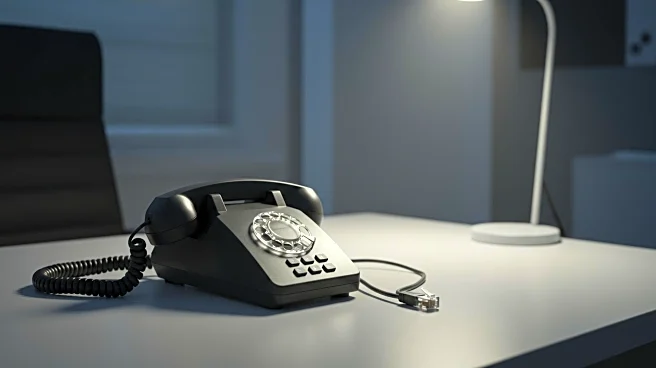What's Happening?
AOL has announced the discontinuation of its dial-up internet service, a technology that was once a hallmark of internet connectivity in the 1990s. The service, known for its distinctive connection sounds, will cease operations on September 30. Dial-up internet, which converts digital data into audio signals to travel over phone lines, was a significant part of AOL's offerings since 1989. It provided internet access to many Americans, especially in rural areas, during a time when broadband was not widely available. Despite its historical significance, dial-up has become largely obsolete, with only 0.1% of American households using it as of 2022.
Why It's Important?
The end of AOL's dial-up service signifies a shift in internet technology and accessibility. Dial-up was crucial in bridging the digital divide in the 1990s, offering internet access to those in rural and underserved areas. Its discontinuation reflects the broader transition to faster, more reliable broadband services. This change may impact the small percentage of users who still rely on dial-up, necessitating a shift to alternative internet solutions. The move also highlights the rapid evolution of internet technology and the increasing demand for high-speed connectivity in modern society.
What's Next?
As AOL phases out its dial-up service, affected users will need to seek alternative internet options. This may involve transitioning to broadband or other available technologies, depending on regional infrastructure. The discontinuation could prompt discussions on improving internet access in rural areas, where broadband may still be limited. AOL has assured that other member benefits will remain unaffected, but the company may need to address customer concerns and support transitions to new services.
Beyond the Headlines
The discontinuation of dial-up internet raises questions about digital equity and access in the U.S. While broadband is more prevalent, gaps remain, particularly in rural and low-income areas. This development could spur policy discussions on expanding broadband infrastructure and ensuring equitable access to high-speed internet for all Americans. Additionally, it marks a cultural shift, as the iconic sounds of dial-up become a nostalgic memory for many who experienced the early days of the internet.












